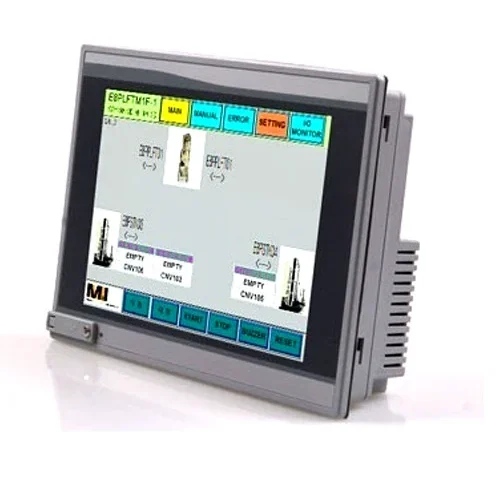
What is an HMI Display?
HMI stands for Human-Machine Interface. An HMI display is a device that allows users to interact with machines, systems, or processes. It acts as a bridge between the operator and the machine, providing a user-friendly interface for monitoring and controlling various operations. HMI displays are widely used in industrial settings, but they can also be found in many other applications, such as home automation, automotive systems, and healthcare equipment.
Key Features of HMI Displays
1. User-Friendly Interface
HMI displays are designed to be intuitive and easy to use. They often feature touchscreens, graphical interfaces, and customizable layouts that make it simple for operators to navigate and interact with the system. This ease of use helps reduce training time and minimizes the risk of operator errors.
2. Real-Time Data Monitoring
One of the main functions of an HMI display is to provide real-time data monitoring. This means that users can see live updates on the status of machines and processes. Real-time data helps operators make informed decisions quickly, improving efficiency and reducing downtime.
3. Control and Automation
HMI displays allow users to control machines and processes directly from the interface. This can include starting or stopping machines, adjusting settings, and responding to alarms. The ability to control operations from a centralized location enhances productivity and streamlines workflows.
4. Customizability
HMI displays can be customized to suit the specific needs of different applications. Users can configure the layout, choose which data points to display, and set up alerts for specific conditions. This flexibility ensures that the HMI display provides the most relevant information and functionality for the task at hand.
Applications of HMI Displays
Industrial Automation
In industrial environments, HMI displays are essential for monitoring and controlling machinery, production lines, and processes. They provide operators with real-time information on performance, enabling them to optimize operations, troubleshoot issues, and maintain safety standards.
Building and Home Automation
HMI displays are used in building and home automation systems to control lighting, HVAC (heating, ventilation, and air conditioning), security systems, and more. They offer a centralized interface for managing various aspects of a smart building or home, enhancing convenience and energy efficiency.
Automotive Systems
In the automotive industry, HMI displays are integrated into vehicle dashboards to provide drivers with information on speed, fuel levels, navigation, and entertainment systems. These displays improve the driving experience by making important information easily accessible and enhancing vehicle control.
Healthcare Equipment
HMI displays are also found in medical devices and healthcare equipment, where they provide a user-friendly interface for monitoring patient data, controlling medical machinery, and ensuring accurate diagnostics and treatments. Their reliability and ease of use are critical in healthcare settings.
Benefits of Using HMI Displays
1. Enhanced Efficiency
HMI displays improve operational efficiency by providing real-time data and control capabilities. Operators can quickly respond to changes, optimize processes, and reduce downtime, leading to increased productivity.
2. Improved Safety
By centralizing control and providing clear, real-time information, HMI displays help maintain safety standards in various applications. Operators can monitor critical parameters, receive alerts for potential issues, and take immediate action to prevent accidents.
3. Cost Savings
The ability to monitor and control processes efficiently can lead to significant cost savings. Reduced downtime, optimized resource use, and improved maintenance practices all contribute to lowering operational costs.
4. User Satisfaction
A well-designed HMI display enhances the user experience by making complex operations more accessible and manageable. This leads to higher user satisfaction and reduced training requirements.
Conclusion
HMI displays are a vital component in many industries and applications, providing an intuitive interface for monitoring and controlling machines and processes. With their user-friendly design, real-time data capabilities, and customization options, HMI displays enhance efficiency, safety, and user satisfaction. As technology continues to advance, HMI displays will play an increasingly important role in the interaction between humans and machines.


